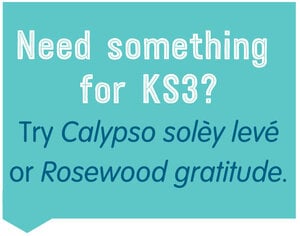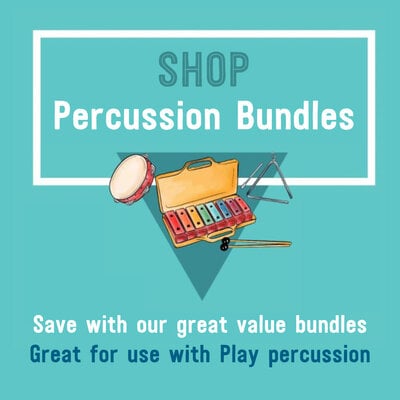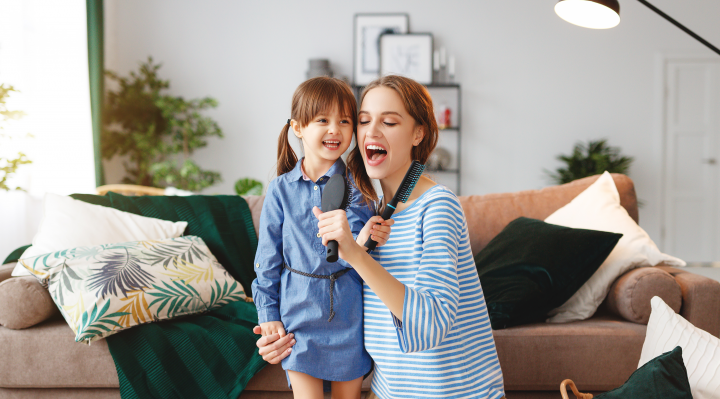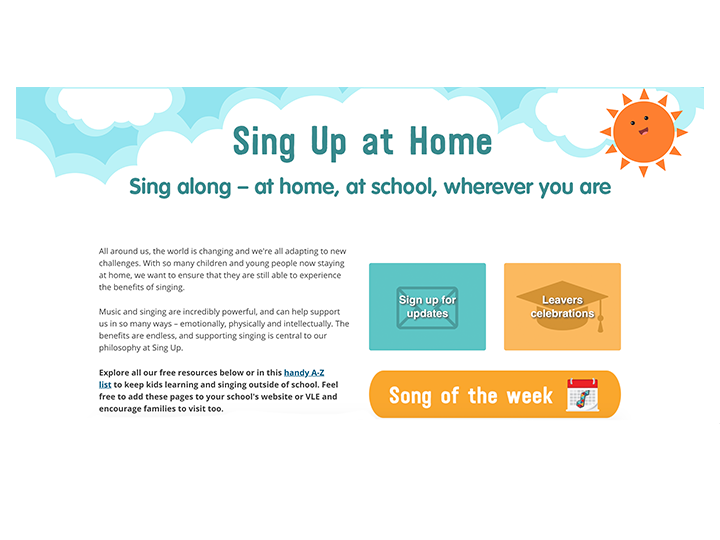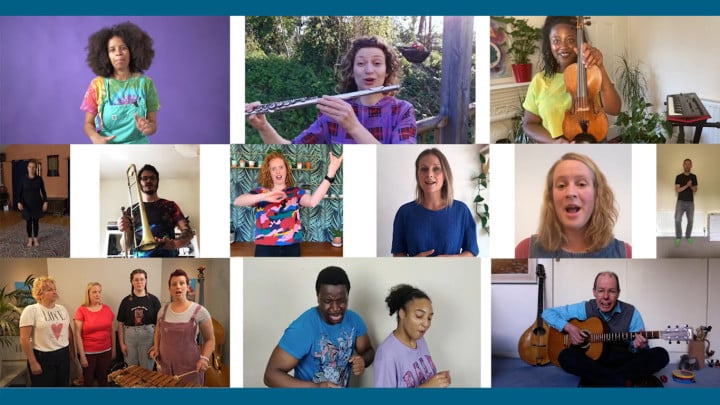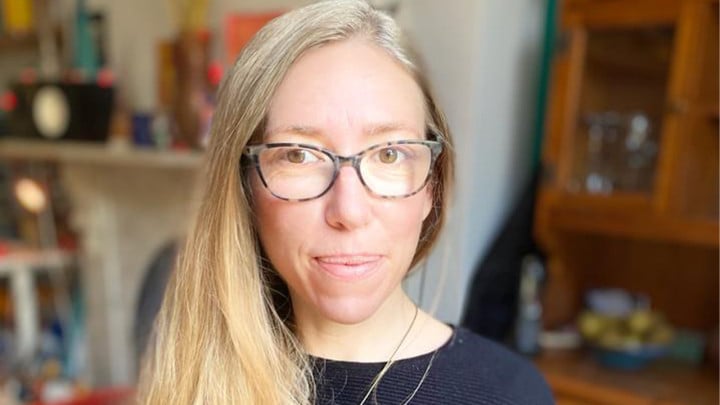
This year, Sing Up embarked on the mammoth task of producing our Music and Drama Education Award-shortlisted Play percussion resources - five newly commissioned pieces for classroom percussion.
There are a large range of percussion parts - untuned and tuned - that build upon lots of musical cells and can be put together in numerous ways. Due to their flexible nature, they can also be used by pupils from of a wide range of age groups including up to KS3 with the more advanced tunes. They work as stand-alone pieces or, for the benefit of primary teachers and non-specialists, as 12-week units of work designed to be used in the spring and summer terms (our primary curriculum implementation guidance can be found here).
To get you in the planning mood ahead of the new term, we sat down with the composer behind it all - Lily May – to learn more about the pieces, her influences and to share her expert advice for teaching the tunes.
Hi Lily, tell us about yourself…
I’m a mother of two, a southeast Londoner with a foot in Brazil. At the moment, I’m loving the colour yellow. My favourite tree is the Beech.
I’m a percussionist, a music educator, a composer and producer. I'm influenced and inspired by many kinds of music. The song I currently have on repeat is Banho de Folhas by Luedji Luna.
What brought you to the world of percussion?
The interaction of the body with rhythm, my love of movement and dance led me to percussion. I also had some incredible music teachers at school. The ones that really encourage, nurture and open the right doors at the right time.
I started playing the drum kit at primary school and then went to the Centre for Young Musicians studying classical percussion. Rhythmic music has always been part of my cultural landscape.
What inspired you to get into music education?
What inspired me to teach was having children of my own. Tuning in to their world, I was reminded of the power and importance of early musical experience and how lucky I had been in my own musical education. I had so many opportunities to play, perform, collaborate, and create. Being able to educate, inspire and influence young musicians is an absolute gift. I get so much from my students that I sometimes wonder who the learner really is.
You’ve written us five brilliant pieces for our Play percussion resource – what are the stories behind them?
Each piece was written with enjoyment and play at its heart. I intended to write music suited to the instruments (small xylophones and glockenspiels, mixed classroom percussion), which means the resulting music shares a common thread of repeating ostinatos that shift in shape and texture.
My most happy memories of playing classroom percussion as a child were when we got really stuck into a simple groove, and just sat in it. As well as being pieces that provide a whole range of musical learning, I hope they are also simply happy places to reside.
I wrote TIME first. This piece has a ticking clock at its heart. The accompaniment patterns explore different beat divisions and patterns that are fundamental in classroom tuned percussion playing.
The structure of TIME is palindromic. This is a great concept to explore musically with children and can be a useful composition tool.
Next came Calypso solèy levé (sunrise) - a celebration and salute to carnival music aimed at more advanced players (10+). It offers space for improvised solos and uses a slightly more complex chord structure. There is a really useful hand drum pattern too! It’s a feel-good piece that will leave you smiling.
Mangrove twilight plays with an alternative interpretation of Caribbean rhythms. At a slower pace the piece uses a traditional call-and-response structure to create a conversation between parts. My time growing up in southeast London and living in Brazil has definitely influenced these two pieces. Syncopated music needs more exposure in primary schools!
Ripples was inspired by the idea of water flowing. Water is a wonderful topic to use in the music classroom. There are so many ways we can re-interpret rivers, seas, rain, storms. Ripples is calm and meditative and the notation is lovely on the eye.
Rosewood gratitude pushes the idea of percussive tuned playing a little further. It’s bouncy, super catchy and uses the West African balafon as its root inspiration. However there are overtones of many styles in this piece. This is definitely one to ‘sit in’ and my personal favourite.
What is an absolute must-have for your classroom when teaching percussion?
Space, well maintained instruments and quality sticks and beaters.
What’s your go-to warm-up/ice-breaker that never fails you?
Hummm…. So many to choose from!
For younger children a few rounds of Double this, double that – but pulling the clapping chant apart, varying the ways of delivery, partnering and silencing certain words. It’s snappy, enlivening and really switches children on.
For older children… it sounds simple but - a name game! Everyone in turn, says their name with an action of their making, then the group copy back. The pace needs to be good and ideally you find a rhythmic flow as you move round the circle. But the act of coming up with something unique to you, and then having it reflected back by everyone is quietly powerful, and again plugs learners in, in a way they really enjoy. This one works well in a hand-drumming context too, with a simple rhythm played in between the names/actions.
What top tips would you give non-specialists or new teachers for tackling the Play percussion resource?
- Get to know the music well, before introducing instruments.
- Use all the warm-ups we’ve provided to explore the piece’s structure, getting the rhythms into the body and mind first.
- Make sure your class are listening and following instructions well before instrumental playing.
- When things sound ropey or the music goes a bit wrong, don’t give up – quietly persevere. Stop and start again.
- Use the pieces and resources as best suits your group, there is a lot of elasticity built into them, feel free to pull them apart, borrow from them and rearrange them!
What do you wish more schools knew or considered about percussion?
That percussion instruments need constant maintenance and repair to be useful. Drums need regular tuning and re-heading often by specialists. It takes a very skilled chef to cook a gourmet meal in a rusty camp kitchen.
If you were a percussion instrument, what would you be?
I would be something like a surdo, dundun or bass pan. Basically, a deep bass drum played with soft sticks. A drum that holds the groove, that gives a backbone for everything else to hang off of.
What’s your favourite instrument to work with?
It would probably be the xequerê (Brazilian / West African large gourde shaker). It is an instrument that dances, and you can dance with it, so that connection between body and rhythm is really strong.
Overall though… like if it was the one special item allowed on the desert island, it would be the piano, because everything is there. It’s an orchestra! And it’s my best friend.
What do you like most about percussion?
Most of my percussion playing and teaching is in a group context, so this is what I love about playing percussion. It’s the ensemble, the becoming something greater than the sum of the parts. It’s the non-verbal communication, the mindfulness of being ‘in the moment’ of music-making with others. And of course, moving people quite literally.
A little birdy tells me you are also in a band? Tell us about that!
Yes, I’m a member of the band Baque Luar. We play original and traditional music influenced by the rhythms of northeast Brazil. Our music is quite unlike anything you’re likely to hear on these shores. We have been known to bring people to tears, as well as rock the dance floor.
2023 was a big year for us. With the help of the Arts Council we’ve recorded and released our first album - Brilha, available on all streaming platforms. You can read more about us here.
Where can we learn more about you and your work?
My teaching website: http://www.hitthegrounddrumming.com
Baque Luar: https://www.instagram.com/baqueluar/?hl=en
Kick-start your planning and explore the Play percussion resource.
Need instruments? Check out our percussion bundles from Normans curated specially to get you started.
Not a member? Register as a Sing Up Friend for free to preview the resource, explore our extensive Song Bank and see what you could get as a Member.

